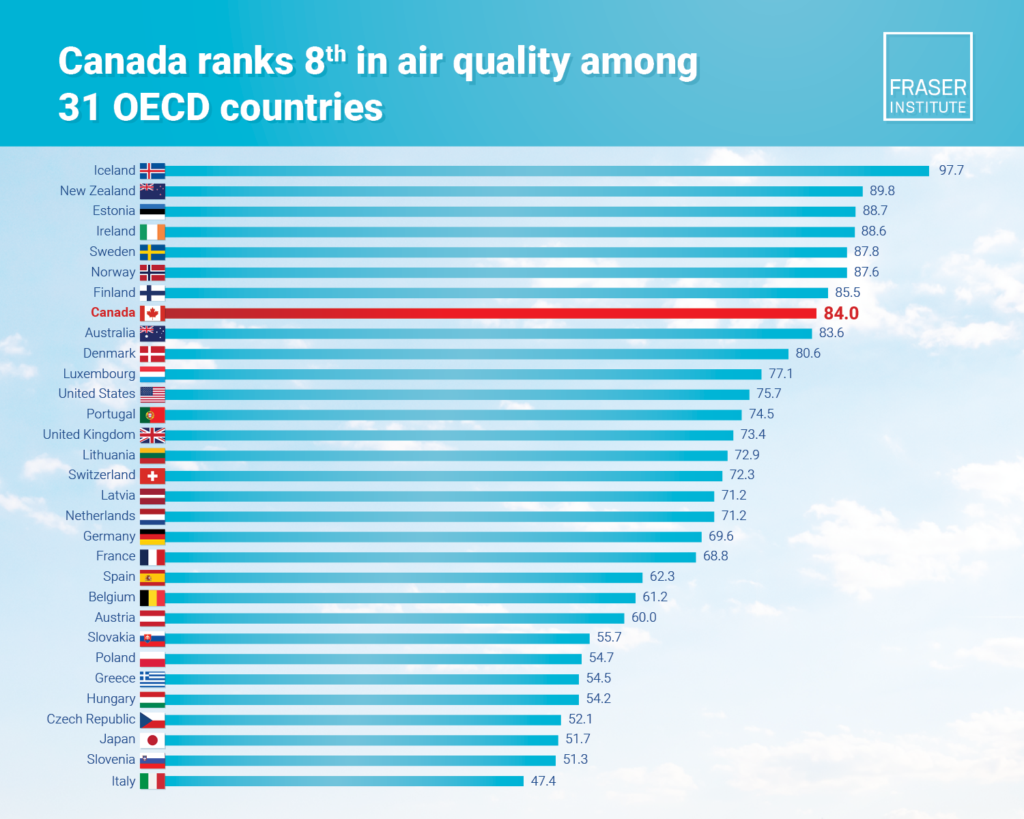By Annika Segelhorst and Elmira Aliakbari
Air Quality in Canada and the OECD
- This study evaluates Canada’s air quality relative to other high-income Organisation for Economic Co-operation and Development (OECD) countries.
- We consider six indicators covering three key pollutant categories—fine particulate matter, ground-level ozone, and nitrogen oxides—using data collected between 2019 and 2022.
- Canada ranks among the top OECD countries in terms of overall air quality, placing 8th out of 31 member countries with a score of 84.0 out of 100. Iceland had the best overall air quality (97.7), while Italy ranked the lowest (47.4).
- Canada (tied with 16 other countries) ranked first for average exposure to fine particulate matter, which measures average levels of fine particulate matter in each country weighted by the population exposed to it. It also ranked 9th, with a score of 98.3, for having a relatively low share of people exposed to air pollution levels above the World Health Organization’s recommended limit.
- Estimated morbidity and mortality due to fine particulate pollution were low, with Canada ranking 5th and scoring 86.6, suggesting low overall public health risk from fine particulate pollution.
- On ground-level ozone, Canada performed near the middle of the group in terms of exposure and estimated health risk, ranking 12th and 15th, respectively.
- Canada ranked 14th, with a score of 96.1, for exposure to nitrogen oxides. Most countries performed well on this indicator, and there was little difference between Canada’s performance and that of the top-ranked countries.

Share This:





 CDN NEWS |
CDN NEWS |  US NEWS
US NEWS 




























